Microbiota-derived bile acids antagonize the host androgen receptor and drive anti-tumor immunity
- PMID: 40239649
- PMCID: PMC12439225
- DOI: 10.1016/j.cell.2025.02.029
Microbiota-derived bile acids antagonize the host androgen receptor and drive anti-tumor immunity
Abstract
Microbiota-derived bile acids (BAs) are associated with host biology/disease, yet their causal effects remain largely undefined. Herein, we speculate that characterizing previously undefined microbiota-derived BAs would uncover previously unknown BA-sensing receptors and their biological functions. We integrated BA metabolomics and microbial genetics to functionally profile >200 putative microbiota BA metabolic genes. We identified 56 less-characterized BAs, many of which are detected in humans/mammals. Notably, a subset of these BAs are potent antagonists of the human androgen receptor (hAR). They inhibit AR-related gene expression and are human-relevant. As a proof-of-principle, we demonstrate that one of these BAs suppresses tumor progression and potentiates the efficacy of anti-PD-1 treatment in an AR-dependent manner. Our findings show that an approach combining bioinformatics, BA metabolomics, and microbial genetics can expand our knowledge of the microbiota metabolic potential and reveal an unexpected microbiota BA-AR interaction and its role in regulating host biology.
Keywords: androgen receptor; anti-tumor immunity; bile acid HSDHs; bile acid metabolism; gut microbiota; host-microbe interactions; microbiota bile acids.
Copyright © 2025 Elsevier Inc. All rights reserved.
Conflict of interest statement
Declaration of interests D.A. is on scientific advisory boards at Pfizer, Takeda, Nemagene, and the KRF. A provisional patent application based on this work has been filed by Weill Cornell Medicine.
Figures

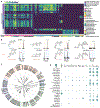
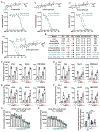
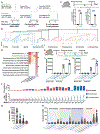
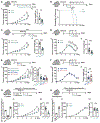
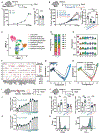
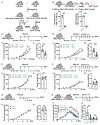
References
MeSH terms
Substances
Grants and funding
- K99 AI180354/AI/NIAID NIH HHS/United States
- R01 AI095466/AI/NIAID NIH HHS/United States
- DP2 HD101401/HD/NICHD NIH HHS/United States
- K99 DK138295/DK/NIDDK NIH HHS/United States
- R01 DK132244/DK/NIDDK NIH HHS/United States
- K99 AI173660/AI/NIAID NIH HHS/United States
- R00 CA252443/CA/NCI NIH HHS/United States
- R01 AT013241/AT/NCCIH NIH HHS/United States
- R01 AI172027/AI/NIAID NIH HHS/United States
- U01 AI095608/AI/NIAID NIH HHS/United States
- R01 CA274534/CA/NCI NIH HHS/United States
- R01 DK135816/DK/NIDDK NIH HHS/United States
- R01 AR070116/AR/NIAMS NIH HHS/United States
- K99 CA290052/CA/NCI NIH HHS/United States
- R01 DK126871/DK/NIDDK NIH HHS/United States
- R01 AI182043/AI/NIAID NIH HHS/United States
- R01 AI178683/AI/NIAID NIH HHS/United States
- R01 AI151599/AI/NIAID NIH HHS/United States
LinkOut - more resources
Full Text Sources
Medical
Molecular Biology Databases
Research Materials
Miscellaneous

